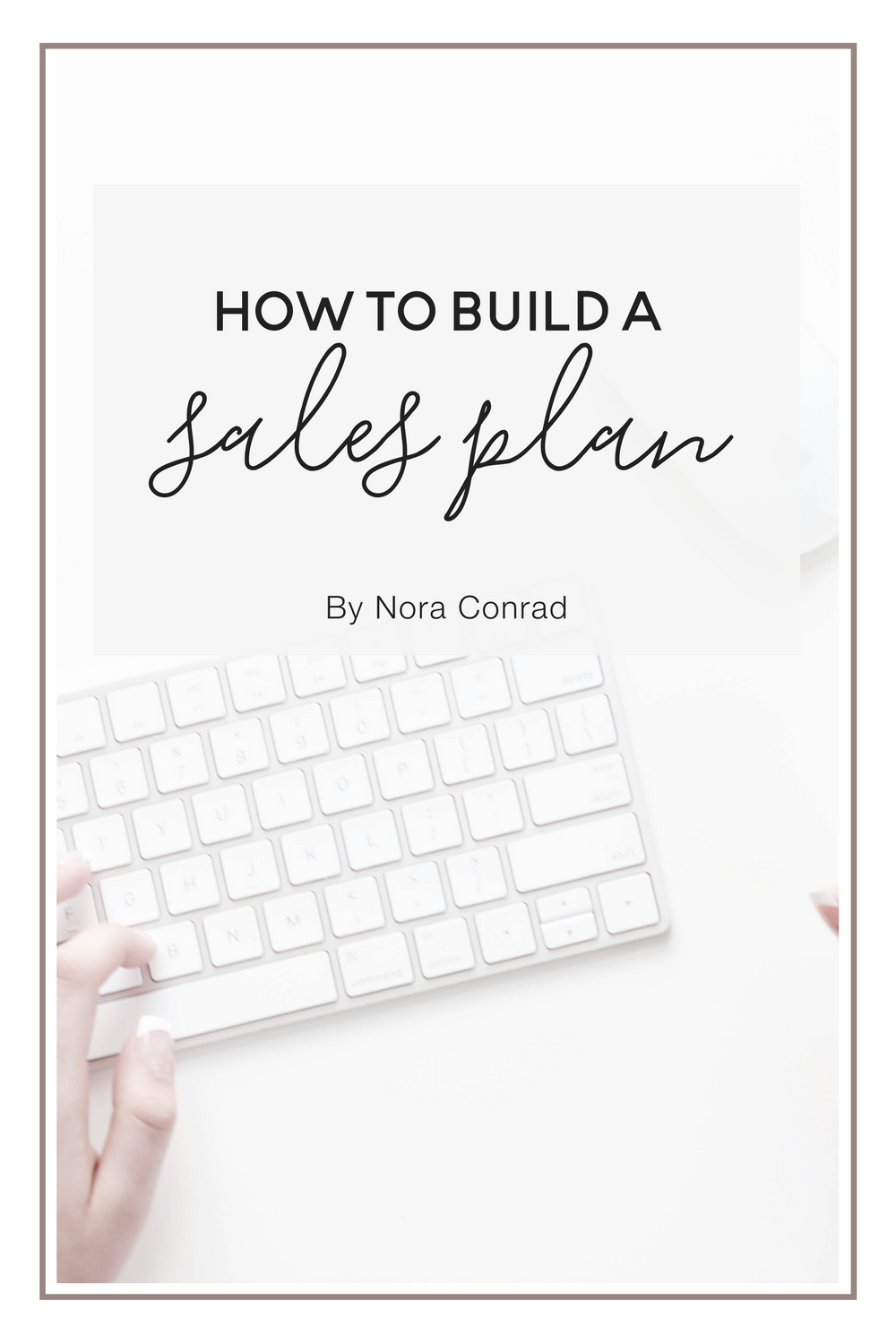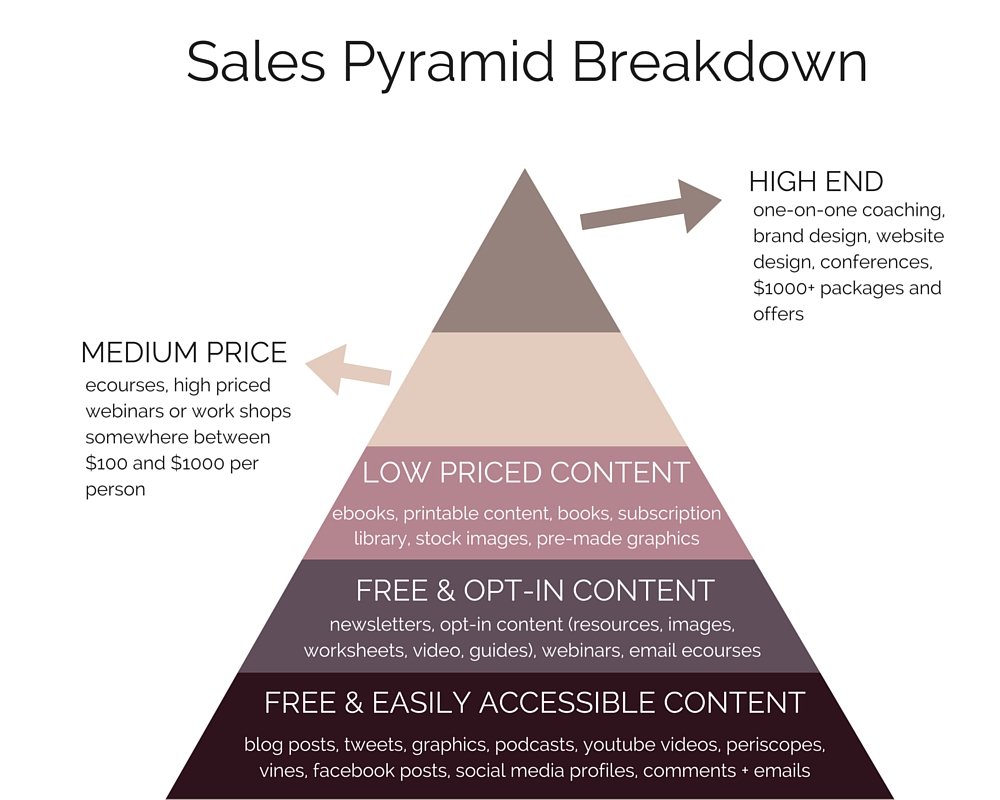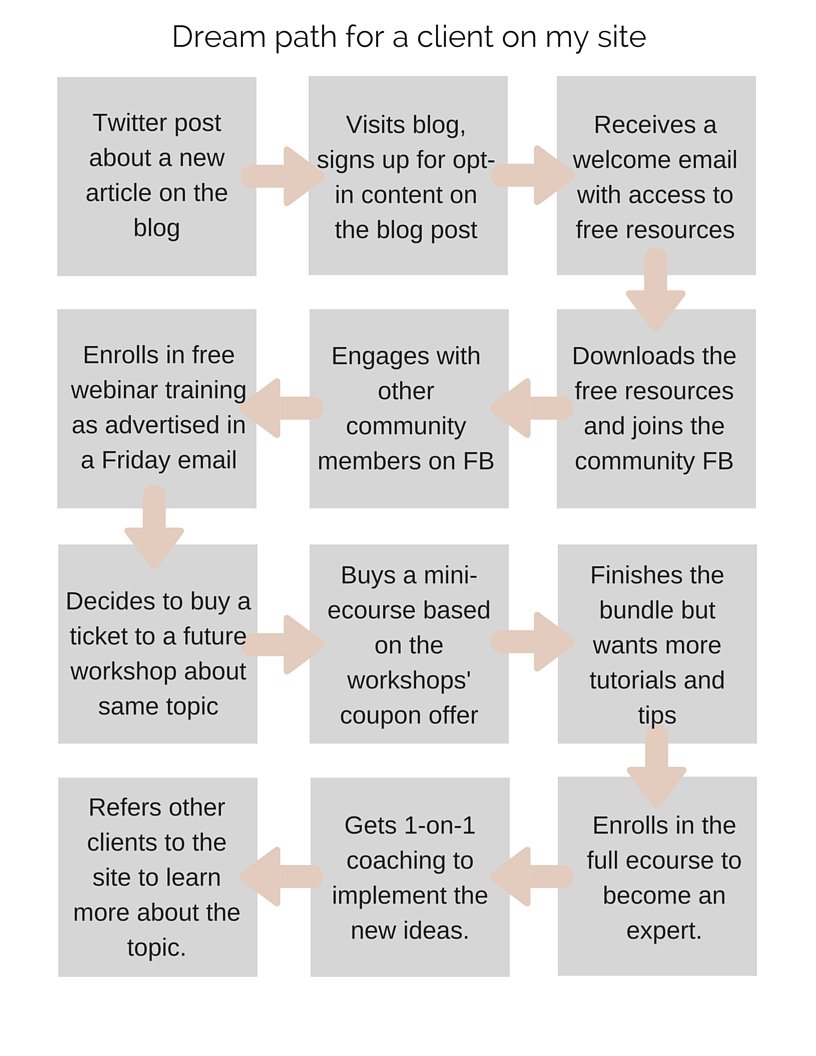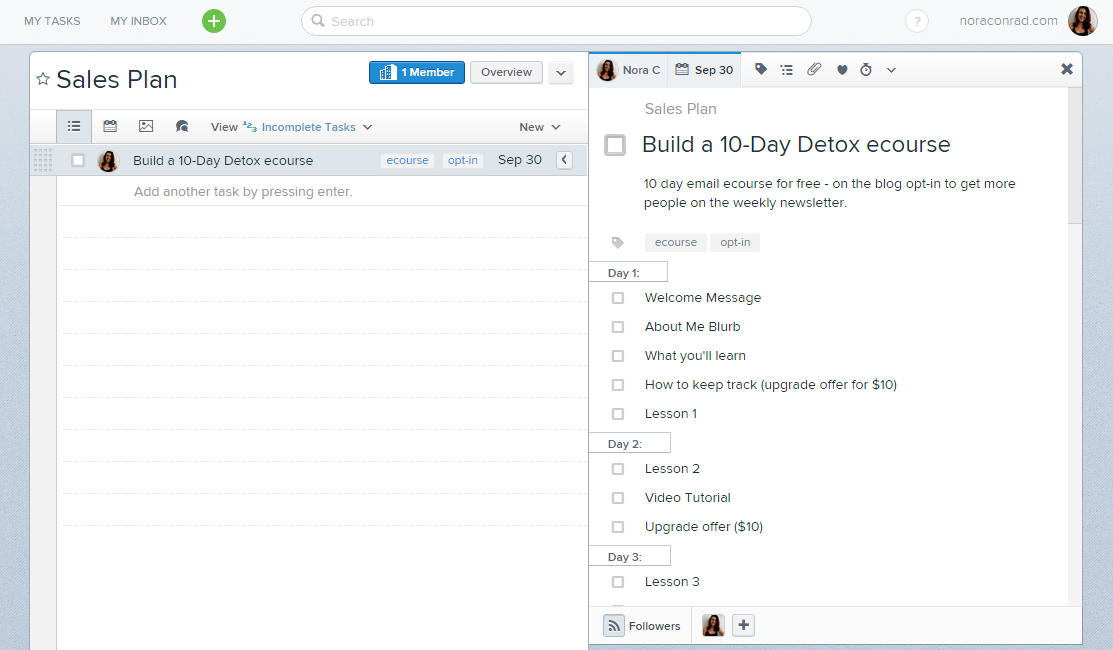How to Build a Sales Plan
If you've been on the business side of Pinterest for 5 minutes, you've probably stumbled across a post about building a sales funnel. When I learned about sales funnels in my "Intro to Business" course my freshman year, my professor spent 2 weeks talking about how to build a plan and implement it. It wasn't until watching Regina's periscope (from ByRegina.com) that I suddenly remembered this vital part of a business.
I spent the week researching, building and looking through old notes to create a "sales funnel guide" for you all. But we're going to take a slightly different approach and talk about building a SALES PLAN, not just a funnel.
Funnels remind me of filling up my car with oil or something messy and smelly. Funnels are ugly and the term itself doesn't make sense, but we'll get into that in a moment. For now, let's get the basics covered.
What's a sales plan?
A sales plan is simple - how are you going transform a reader of your blog to a paying customer. Creating a plan for your products, paths and implementation will help you focus on your ideas and know which ideas to begin building.
If you're like me and have a million ideas running through your head, this outline will help you figure out which steps are most important and how to start.
A sales plan is just like a business plan, with a focus on:
- What you're selling
- How you're directing the customers toward your products
- How you'll build the products and pathways for your clients to follow.
Why not a funnel?
Besides the fact that it's an ugly word, the term doesn't make much sense. When you pour water into a funnel, everything (eventually) pours out the bottom. That's the point of a funnel.
When you build a sales funnel, every person who signs up for your newsletter or tweets your link WILL NOT become a client who pays for a $3000 site or takes your $600 ecourse.
A sales funnel (in Regina's words) "dehumanizes" the work you're putting into your business. A funnel implies that people just tumble into more expensive products/services in your plan - and that's not how the world works, my friend.
I almost jumped for joy when Regina made a SALES PYRAMID in her recent webinar. So that's what we'll be making today, a pyramid.
A pyramid is perfect for sales because to move up on the plan, a customer has to make a conscious choice to do so, and when you view your clients as actual people who are CHOOSING to buy your products, you'll treat them a lot better.
We're not going to JUST focus on the pyramid because there's a more important part - building the paths. A pyramid is fine and dandy, but if you're not giving your newsletter subscribers a clear way to buy your ebook, you're not going to make any sales.
Let's start with the pyramid and move forward from there.
Step 1. Building Your Pyramid
This part is fairly simple. I used a 5 level pyramid on my design, but you can have as many (or as few) levels as you need. Start adding products and services you currently have into each section, then fill it up with ideas you're working on.
The levels should be broken into price ranges. I used the following:
- Free & Easily Accessible (meaning you gain a fan)
- Free Opt-In Content (meaning you gain an email address)
- Low Priced Content (you gain anywhere from $1-$99)
- Medium Price (you gain anywhere from $100-$1000)
- High End (you gain anywhere from $1000+ per client)
You could break these into more chunks or just three (free, paid + exclusive). Either way, the idea is to categorize these products & services so you can see which levels people will grow to. For example, someone who makes it to the medium price level and buys a $500 ecourse, probably will not buy all three of your $500 ecourse - that's why your goal is to get them to a LEVEL, not each product. No one will buy all your products (if they do, give me a call and teach me your ways).
Once you've filled your pyramid, the next step will be much easier to build because you'll have a clearer idea of the hierarchy of your products and services.
Step 2. Build You Paths
A pyramid is great, but until you create paths, your audience has no way to move up on your pyramid. You could have a killer 6-week ecourse, but if you don't have a sales page or a twitter campaign, no one will even know it exists!
Paths are simple a map for your audience to get them from one place to another. Pathways can be build with your products & services, ads, emails, announcements, banners, opt-in offers and upgrades. Take these elements and use them to create similarities in your products.
For example, I have a free ebook about online tools. Anyone can download the book in exchange for their email. Once someone downloads the book, I have a pretty good idea that they like to learn about tools to help their business - so in my weekly email (that they will receive), I talk about tools, systems and business. Every few weeks I advertise some paid product I have that will further that knowledge (like my low priced level bundles).
You could have one path or 4000 paths. You don't need to plan every single one, but you do need to have some way for your audience to start at the bottom of the pyramid and work their way up.
Here's an example of my dream client & how they would find me online:
Every path will be different. This example path could have 500 variations (coming in from FB or Pinterest instead of twitter, reading XYZ blog posts before signing up for the newsletter, being sent 4 1/2 emails before enrolling in a webinar, joining the slack channel instead of the FB group).
I could map out thousands of ways for my clients to get to me, but that's a waste of time - all you need to focus on is creating 2 or 3 VERY clear, simple and easy paths for your audience to find, and let them decide how to take it.
I might have a client jump from one blog post to full-time coaching client. I might also have a dedicated reader who leaves comments on all my posts, shares all my content, but never buys a single thing. That's okay. What you want to do is tie together your related content.
Here are some ideas for how to weave your products and services together:
- Write a free ebook with an add to your ecourse about the same topic on the last page (maybe with a coupon code)
- Offer a free 7-day email ecourse to get subscribers to open your emails regularly, offer a content upgrade relating to the ecourse
- Offer ecourse members a free 30-minute coaching call with a special coaching package discount
- Build an affiliate program to turn raving fans into fans that advertise for you
- Build AMAZING free content upgrades so people know you'll build incredible paid content.
- Do a free webinar about a specific topic and offer a special bundle of your products to the viewers
The whole point of building these paths is to help your audience make choices within your sales pyramid. Give them the chance to buy from you and give them a reason to buy. Then, let them handle their decisions on their own.
Step 3. Implement the Plan
This is the most important step. You could plan until you're blue in the face, but if you never build the ecourse or add a clear call-to-action at the end of your posts, none of those plans will matter.
Once you've made your plans, you need to make an action list. Create a detailed list of to-do items and assign due dates to everything! Personally I make all my plans in Asana (read about how I use Asana here). This allows me to add dates, comments and sub-tasks to all my ideas. It's also something I check every morning, so these projects stay the focus of my week/month/year.
Here's a quick look at my on of my Sales Plan projects from Asana to give you an idea:
Focus on building the content you need to make a path for your clients and start with the basics. There's no point in making a $900 ecourse if you don't have an email list to advertise it too. Start on building the first steps in your plan and move up from there.
When in doubt, start on the lowest tier of your pyramid. Being building free content (blog posts, opt-in offers, webinars, video) to build a reputation and a mailing list. Give people content that they need and love. When you're giving someone AMAZING value, they'll want more from you.
As you build your audience you can start building products based on need, not your ideas. Keep track of what people are asking you, what questions pop-up in the comments most often, which blog posts are most popular? (I keep track of this in Evernote).
Base your products and services on your audience and your business will be far more successful than someone who's trying to build an audience around their product.
Okay, now get to planning.
BUT, please. Please. Pretty please. DO NOT get stuck on the planning phase. You can plan until the day you die, but eventually you need to take action.
Do you have a sales plan in place? Anything I didn't cover? Let me know in the comments below!




